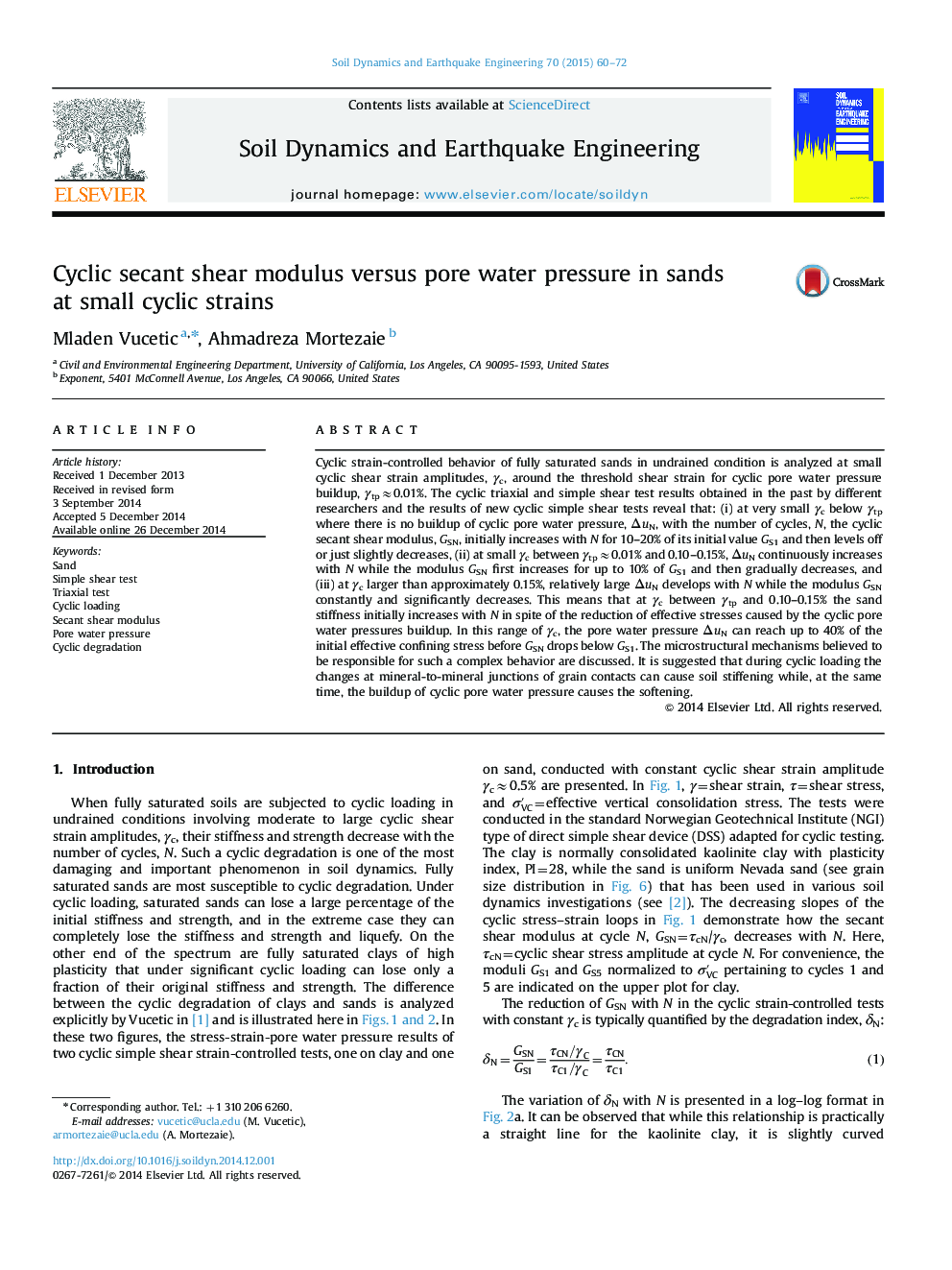| کد مقاله | کد نشریه | سال انتشار | مقاله انگلیسی | نسخه تمام متن |
|---|---|---|---|---|
| 304057 | 512772 | 2015 | 13 صفحه PDF | دانلود رایگان |

• Behavior of fully saturated sand at small cyclic strains, γc, is analyzed.
• Focus is on γc around threshold for cyclic pore water pressure γtp≈0.01%.
• Change of secant shear modulus, GSN, and cyclic pore pressure, ΔuN, are correlated.
• At γtp<γc<0.10% GSN increases and then decreases, while ΔuN always increases.
• Consequently, at γtp<γc<0.10% stiffness goes up while effective stress goes down.
Cyclic strain-controlled behavior of fully saturated sands in undrained condition is analyzed at small cyclic shear strain amplitudes, γc, around the threshold shear strain for cyclic pore water pressure buildup, γtp≈0.01%. The cyclic triaxial and simple shear test results obtained in the past by different researchers and the results of new cyclic simple shear tests reveal that: (i) at very small γc below γtp where there is no buildup of cyclic pore water pressure, ΔuN, with the number of cycles, N, the cyclic secant shear modulus, GSN, initially increases with N for 10–20% of its initial value GS1 and then levels off or just slightly decreases, (ii) at small γc between γtp≈0.01% and 0.10–0.15%, ΔuN continuously increases with N while the modulus GSN first increases for up to 10% of GS1 and then gradually decreases, and (iii) at γc larger than approximately 0.15%, relatively large ΔuN develops with N while the modulus GSN constantly and significantly decreases. This means that at γc between γtp and 0.10–0.15% the sand stiffness initially increases with N in spite of the reduction of effective stresses caused by the cyclic pore water pressures buildup. In this range of γc, the pore water pressure ΔuN can reach up to 40% of the initial effective confining stress before GSN drops below GS1. The microstructural mechanisms believed to be responsible for such a complex behavior are discussed. It is suggested that during cyclic loading the changes at mineral-to-mineral junctions of grain contacts can cause soil stiffening while, at the same time, the buildup of cyclic pore water pressure causes the softening.
Journal: Soil Dynamics and Earthquake Engineering - Volume 70, March 2015, Pages 60–72